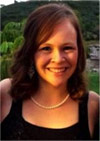Commemorating Yom HaShoah 2017 through Testimony
Holocaust Remembrance Day, or Yom HaShoah as it’s known in Hebrew, commemorates and honors the victims and survivors of the Holocaust. This year, people around the world will remember the victims of the Holocaust April 23-24, 2017.

Throughout the entire month of April, USC Shoah Foundation remembers the victims of genocide with testimony, educational resources and personal stories for Genocide Awareness Month.
Yom HaShoah is one of the final days of remembrance after commemorating the Genocide against the Tutsi in Rwanda, the Cambodian Genocide and Armenian Genocide throughout April.
However, you can remember and learn from the survivors of the Holocaust and other genocides all year long through eyewitness testimony preserved in the Visual History Archive. So today and every day we encourage you to engage with testimony, integrate our educational resources in your classroom and be inspired through testimony.
Watch Testimony from the Visual History Archive
Explore the Visual History Archive at an access site to engage with all 55,000 eyewitness testimonies. Or watch testimonies at home via the Visual History Archive Online. Search by interviewee name, experience group or by over 64,000 indexed terms.We found the clip below by typing in “Yom HaShoah” into the index search, which is mentioned in 122 testimonies.
Testimony Series
Explore curated testimony clips from the Visual History Archive available on our website on topics including deportation, discrimination and liberation. You can also watch special testimony series created for anniversaries and topics including 70 Stories of Auschwitz, for the 70th Anniversary of the liberation of Auschwitz in January 2015. Watch here
Teach with Testimony
Introduce your students to history of the Holocaust with USC Shoah Foundation’s educational platform IWitness.

Integrate Holocaust survivor and eyewitness testimony into your curriculum or lesson with curated video clips across topics including anti-Semitism, propaganda, resistance and memory. IWitness also includes testimony to the Genocide against the Tutsi in Rwanda, Nanjing Massacre and Guatemalan, Armenian and Cambodian Genocides. Teachers can use testimony clips from across collections for a comparative analysis or to connect themes like propaganda, resistance and discrimination.
IWitness Activities
Explore eyewitness testimony at a deeper level with IWitness activities across subjects including Holocaust literature, European History and humanities.
Mini Lesson: Reflecting on Respect
Students will watch a clip of the testimony of Holocaust survivor Coenraad Rood and reflect on the message he gives about the importance of showing respect for all people.
Mini Quest: Cultural Acts as Resilience During the Holocaust
Students gain an understanding of the role of culture during the Holocaust. They will watch survivor testimony and identify different examples of cultural activities in camps and ghettos. Students will also reflect on the importance of these actions for the survivors. Students will respond to what they have learned by creating a collage or other artistic response.
Video Activity: Identity, Respect and Rescue
In this activity, students will consider the role beliefs and values play in the choices people make. They will explore the personal motivations of two rescuers/aid providers from the Holocaust and Genocide against the Tutsi in Rwanda. Then, students will search IWitness and build a video that reflects other rescuer/aid giver motivations and how identity played a role in those choices.
Information Quest: Yet Again: Mass Violence and Racism
Students will be introduced to personal testimonies about racism from several different genocides and instances of mass violence, including the Holocaust. They will explore racism as a common experience across time and location. And they will write a one minute essay reflection on why they think racism continues when there are so many examples of how devastating the results can be when it goes unchecked.
Click here to explore more IWitness Activities
Use IWitness as an extension to Echoes and Reflections

Rich with testimony clips from Holocaust survivors, rescuers and American liberators, and seamlessly integrated into 10 multipart lessons, Echoes and Reflections explores major themes associated with the Holocaust. The program, developed for educators of students in the United States ages 14 and up, covers topics that include anti-Semitism, Nazi Germany, the ghettos, the Final Solution and resistance. IWitness includes several activities that can be integrated into lessons including the Mini Quest Righteous Among the Nations
Echoes and Reflections combines the expertise of three world leaders in education—the Anti-Defamation League, USC Shoah Foundation, and Yad Vashem.
Inspired by Testimony
Read stories on the blog Through Testimony, written by educators, students, researchers, staff and individuals around the world who have been inspired by Holocaust survivor testimony.

How will you commemorate Yom HaShoah this year? Share your thoughts @USCShoahFdn or on our Facebook page.
